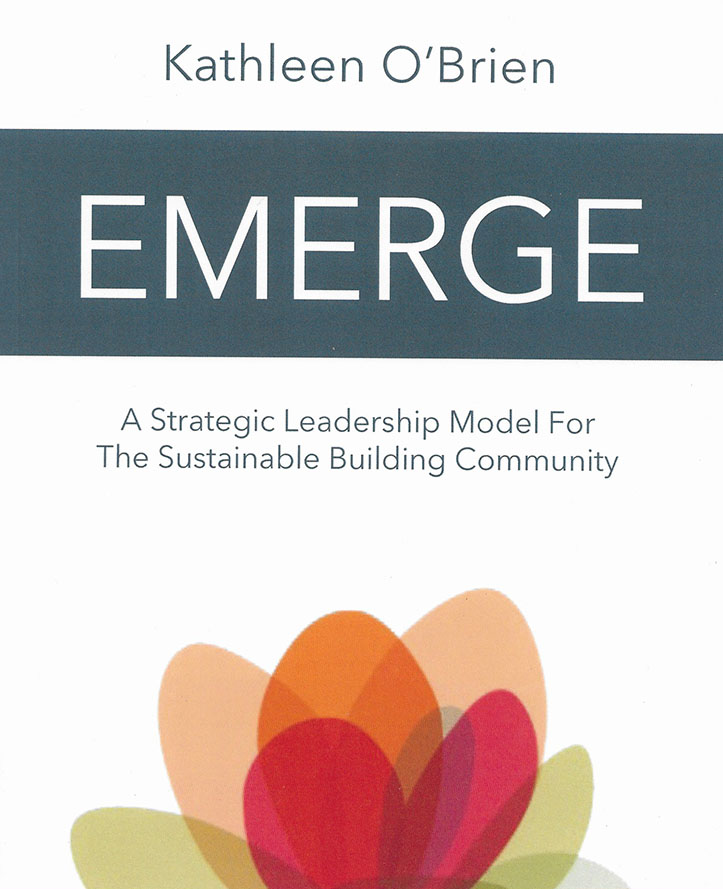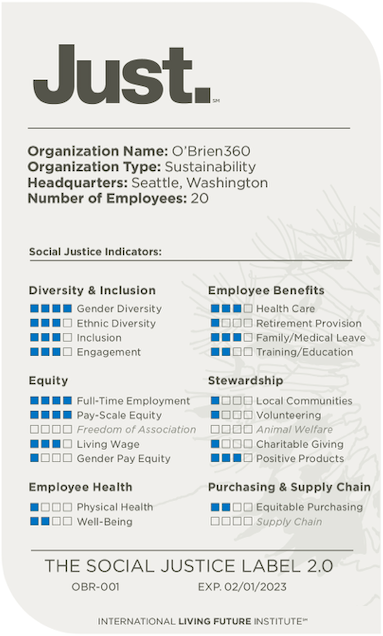As part of ILFI’s educational offerings, the EMERGE Leadership Project aims to support individuals and organizations committed to bringing about a world where all building designs and projects prioritize life-sustaining solutions. In an online workshop that Kanika Sharma (Associate Principal, Integral Group | LFA) and I offered in the Fall of 2020, we explored ways the model could in particular foster equity, as the third “leg” of sustainable building design and construction.
Perhaps the most important step in any Living Building project, and one that emphasizes inclusivity, is to identify the big question(s) finely tuned to a particular situation and community. These questions should come directly from those who will live, work, or play there when the project is complete. Lists of materials and techniques are fine, but first, what questions do they care about and generate excitement and insights? Here is a list of queries that came up in projects that Kanika and I shared at the workshop:
- What if our building could be a neighborhood power plant?
- What would a world without fossil fuels look like?
- How can we thrive while generating zero waste?
- What if our project was an agent of societal good?
As important is the understanding and appreciating the positive values represented by those “in the room.” This understanding can both be a basis for identifying those “big” question(s) and for generating hope, a key ingredient to successfully doing the hard work of sustainability. Here are a few values we identified in the workshop:
- Ethical
- Honest
- Congruent
- Fair
- Equitable
- Transparent
- Attentive
- Humble
- Credible
- Effective
- Accountable
The heart of the workshop was then a series of tools that can be used both to foster conversation and agreement on how such values and what big questions are particular to the project. Here are a few we covered, with brief definitions:
- Enroll: informing plus inspiring action within the context of relationship
- Witness: Observing from a self-aware, neutral, and teachable place.
- Practice Awareness: A daily awareness practice that generates acceptance (and understanding) will lead to an action that is likely to be successful and certainly more appropriate for a given situation.
- Plan: A framework that includes time to ponder and prepare and prioritize tends to be more successful and is definitely more respectful of all involved in the process.
- Contextualize: Using context can help elevate the discussion by widening the lens everyone involved is looking through for perspective. We used the example David Eisenberg often uses of expanding what “health and safety” in building looks like. (For example, climate change!)
- Align: Where do our paths “meet”? That’s where we can engage most successfully.
- Celebrate: While we often look at what we didn’t achieve, we ought to look at the potential we have realized.
- Employ Positive Change Theory: Why and how do people adopt and maintain change? Seeing every project as an opportunity for everyone involved to learn and lead means that everyone is more likely to learn and lead!

For any of this to work, we have to practice what we preach. That’s why the Just label is so important. It provides credibility for the stand we are taking and the values underlying our day-to-day efforts. Lynnel Hampton-Bott, Marketing Coordinator of O’Brien360 attended the EMERGE workshop committed to getting Just certification for the company. The workshop informed her leadership efforts to get this done.
An Emergent Leader understands that to bring about long-term positive change, it is essential to harness the project team’s collective energy, knowledge, and vision and engage them in an effective, healthy, and emergent collaboration. Such collaboration needs to be inclusive. It should not only encourage everyone to contribute but also encourage everyone to learn from each other.

While facilitating an emergent collaboration, an effective leader must utilize the “alignment” tool to steer the group towards a common goal. Individuals representing different disciplines and backgrounds often bring diverse ideas and experiences to the table. An emergent leader must acknowledge the diversity of opinions while also looking for opportunities where there is already some alignment and build on that. For example, what sustainability goal is the client committed to achieving? Is there an opportunity to identify a stretch sustainability goal beyond the baseline goals? Is there an opportunity to find intersectional sustainability goals that can address multiple issues at once without compromising budget and time?
This exercise is best done during the early stages of an integrated design facilitation workshop when there is maximum opportunity to innovate and influence the design. Aligning the team around a common goal will foster accountability, spark creativity, and build a long-term ability to implement transformative and resilient solutions.

Passion for transformational change can be a powerful driver for effective leadership. Any movement toward fulfillment of an outcome, whether as ordinary as getting more quality sleep or as noble as recruiting a young BIPOC to the environmental field – can begin with a single individual or a small group or company passionate about the envisioned transformation. In my case, I came to O’Brien360, a relatively small company with a strong desire for meaningful work, and found it in the company’s mission. The company supported my attending the EMERGE Leadership workshop where I was challenged to consider my leadership style and the essential role of transparency and authenticity in reaching a goal. I discovered how well aligned the values discussed at the workshop, such as honesty, encouragement, and positivity were aligned with my own and learned how additional values might be employed to achieve earning our first Just label–a goal I had identified with the company’s leadership.
With its emphasis on collaboration, communication, and systems thinking, EMERGE enabled me to calibrate my approach when working with busy but committed staff to consider, facilitate, and earn the Just label. Though this process was complex, with many moving parts, the tenets of EMERGE Leadership proved to be well aligned with my company’s mission, and we were able to achieve our goal successfully. For the company, the process was an opportunity to bring transparency to O’Brien360’s long-held equity commitment. For me, it was an opportunity to lead in a way I’d hoped, and which the EMERGE workshop crystallized.
Editor’s Note: Kathleen O’Brien shares the strategic leadership model in her book titled EMERGE: A Strategic Leadership Model for The Sustainable Building Community The book includes program details, case studies, practical guidance, a personal leadership development template, and bonus exercises to assist you on your personal leadership journey. EMERGE is on sale at the Ecotone Bookstore for a limited time. *All proceeds go to funding ILFI programs, education, and advocacy initiatives.*


